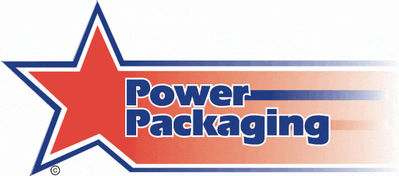- Home /
- Top Void Fill Packaging Solutions in Australia: Eco-Friendly, Protective & Reliable
Search Products
Product Categories
- Sustainable Packaging
- Labels
- Paint & Markers
- Ranpak Paper Packaging
- Cardboard/Paper Products
- Cold Chain Products
- Knives & Blades
- Machinery
- Material Handling
- Plastic Products
- Protective Products
- Safety/Gloves
- Strap & Accessories
- Pallet Wrap
- Tape
- Tying/Fastening
- Washroom
- ______________________________
Void Fill Packaging in Australia: What It Is, Why It Matters & How to Choose the Right Type
Smart packaging choices that protect your products and your reputation.
Packaging Is Not Just the Box. It Is What Is Inside That Counts
When you send a product, it is not only the contents that matter. It is how well they are protected in transit. Void fill packaging refers to materials that fill the empty space inside a carton or mailer so that goods do not shift, rub or break on the way to your customer.
For Australian businesses shipping everything from fragile electronics to homewares, the right void fill strategy means safer deliveries, fewer returns and a smoother customer experience. It is also a practical way to align your brand with modern expectations around sustainability and the Australian Packaging Covenant Organisation (APCO) guidelines.
Paper based void fill systems such as the Ranpak range are a key part of this shift. They give you on demand, curbside recyclable protection that works for both ecommerce and industrial goods.
If you want to see the types of products available, you can browse our void fill category or our Ranpak paper void fill options.
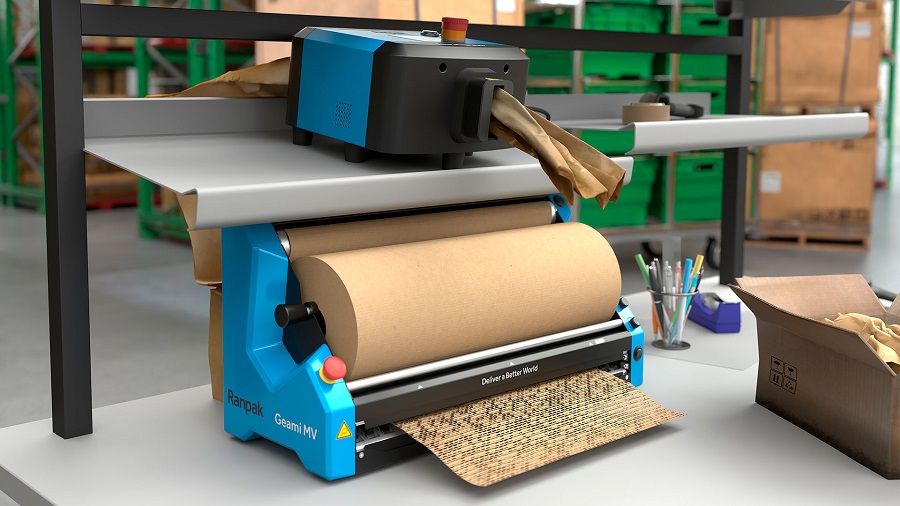
A Quick Look: What Is Void Fill Used For?
- Cushion fragile or irregularly shaped products inside the carton.
- Prevent items from rattling, rubbing or breaking in transit.
- Help improve presentation during unboxing and reduce “box too big” complaints.
- Support compliance with courier handling requirements by reducing damage risk.
- Reduce environmental impact when you choose recyclable or compostable options.
Common Void Fill Options and Where They Work Best
Different products need different levels of protection. Below is a plain language look at some of the most widely used options and when they make sense in an Australian context, with a focus on how Ranpak paper systems can replace traditional plastics.
1. Packing Paper and Paper Void Fill (Ranpak)
Simple, familiar and effective. Kraft packing paper is widely used in ecommerce, retail and industrial goods. It works for wrapping, interleaving and crumpled void fill around a wide variety of products, from books and bottles to automotive parts.
Ranpak systems such as FillPak TT, FillPak Trident and FillPak Mini convert compact kraft paper fanfold into high yield void fill at the packing bench. The paper is curbside recyclable in most Australian councils and helps you move away from unnecessary plastic air pillows.
You can see examples in our Ranpak void fill paper guide and our paper void fill category.
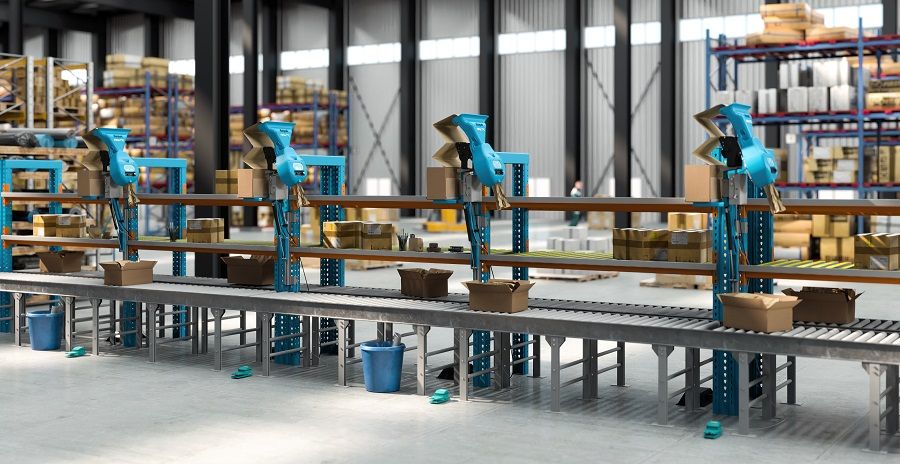
2. Air Pillows and Inflatable Systems
Air pillows are small plastic cushions filled with air and sealed in sections. They are ideal for filling empty space around products that are already in an inner carton or protective pouch. Their main advantages are very low weight and high yield per carton.
In Australia, most air pillows are made from low density polyethylene film (LDPE 4). They are often suitable for store drop off or specialised soft plastic recycling where programs exist, but they should not be placed in standard household recycling bins unless your local council specifically allows it. Many businesses now use inflatable systems alongside paper void fill so they can gradually reduce plastic use without disrupting operations.
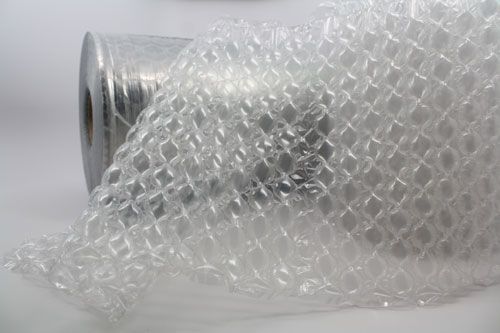
3. Biodegradable Packing Peanuts and Loose Fill
Traditional peanuts were made from expanded polystyrene. Many Australian suppliers now use starch based “biofill” peanuts that dissolve in water and can be composted in a suitable home compost system. These are useful for filling voids around irregular shapes or mixed shipments.
At Power Packaging, our Biofill biodegradable void fill is made from natural starch, contains no added toxic ingredients and can be broken down with water. It is a strong option if you want to move away from polystyrene and still maintain good cushioning performance.
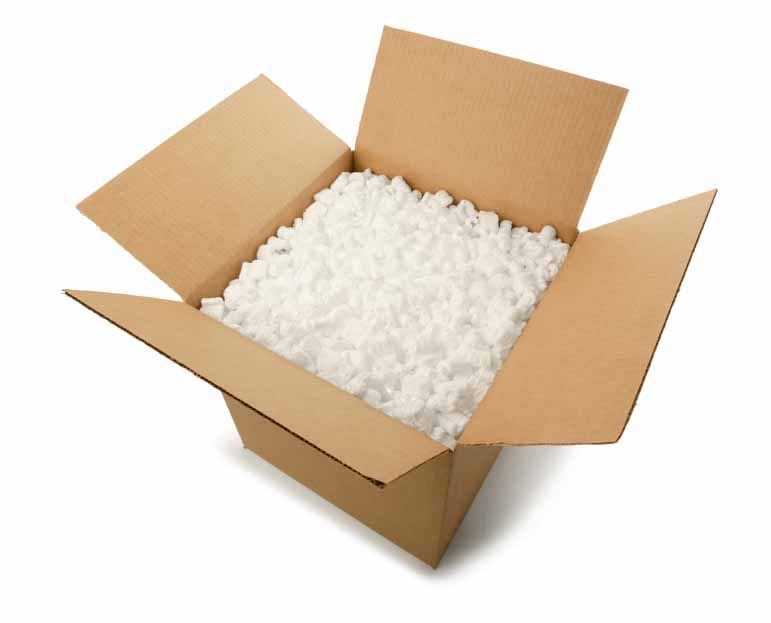
4. Bubble Wrap and Eco Bubble Options
Bubble wrap remains a go to for highly fragile items such as glassware, ceramics and electronics. It provides both cushioning and surface protection. For businesses focused on sustainability, look for options with recycled content or thinner, high performance films that use less plastic for the same protection.
Our bubble wrap rolls and eco friendly bubble wrap range give you options that balance protection, cost and environmental impact.
How to Choose the Right Void Fill
- Fragile or high value items
Combine bubble wrap or paper cushioning with a stable void fill such as crumpled paper or Biofill. - Lightweight goods
Air pillows or soft paper void fill protect the product without adding unnecessary weight to freight. - Heavier or dense items
Use stronger materials such as paper cushioning from systems like Ranpak PadPak to create blocking and bracing. - Eco priorities
Choose curbside recyclable paper, certified compostable starch peanuts or paper based cushioning systems. Ranpak paper is a popular option where businesses want to remove plastic void fill while keeping strong protection. - Unboxing and brand experience
For retail and ecommerce, consistent and neat void fill helps your product feel more premium and reduces the sense of over packaging.
For higher volume operations, automated systems such as Ranpak FillPak TT, FillPak Mini and on demand inflatable bubble systems can reduce labour time and improve packing consistency.
Why Many Businesses Are Switching to Ranpak Paper Systems
Power Packaging supplies the full Ranpak range of paper based void fill and cushioning systems. These solutions are popular with Australian warehouses and ecommerce operations because they are easy for packers to use and easy for customers to recycle.
- FillPak for fast, high yield void fill in shippers and cartons.
- PadPak for heavy items and cushioning that needs real holding power.
- Geami for retail friendly wrapping that replaces bubble wrap with paper honeycomb.
- WrapPak for thermal and surface protection needs.
Our team can recommend a Ranpak combination that suits your mix of SKUs, damage rates and sustainability goals. You can also explore the range on our Ranpak paper packaging page.
Real World Applications: Who Uses Void Fill and How
Ecommerce and Online Retailers
From boutique skincare to electronics and homewares, ecommerce brands use void fill to prevent damage and keep cartons compact. Ranpak paper is often used at pack benches for fast, tidy fill that customers can recycle.
Retail and Gift Packaging
Retailers often use coloured paper or tidy paper void fill instead of plastic based options. Geami wrapping gives a premium, gift ready look while still using paper only materials.
Electronics and Technology
High value electronics are usually packed in custom inserts, with void fill such as paper, inflatable cushioning or bubble used around the inner carton. Anti static options are used where components are sensitive.
Moving and Relocation
Packing paper and loose fill help protect a mix of household items in moving cartons. Proper void fill minimises movement in the carton so objects do not grind against one another.
Industrial and Heavy Goods
Manufacturers use paper cushioning, blocking and bracing techniques and sometimes timber or foam to keep heavy items from shifting or damaging the carton.
Trends and Innovations in Void Fill
Across Australia, businesses are moving away from unnecessary single use plastics and towards paper based systems, certified compostable fillers and automated machinery. APCO’s Sustainable Packaging Guidelines and the 2025 National Packaging Targets encourage companies to design packaging that is recyclable, reusable or compostable and to phase out problematic plastics where practical.
In practical terms, that has led to growth in solutions such as:
- Paper based void fill systems like Ranpak paper packaging, which use renewable paper and are widely recyclable.
- Bio based loose fill using starch rather than polystyrene, as seen with our Biofill products.
- Inflatable systems with recycled content and thinner films that use less plastic for the same performance.
- Internal recycling loops, for example converting offcut cardboard into low cost void fill for internal shipments.
Some states are also introducing controls on expanded polystyrene packaging, which encourages a shift to paper and certified compostable solutions for cushioning and void fill.
Frequently Asked Questions
- Is biodegradable void fill actually compostable in Australia?
- Not all biodegradable products are compostable, and not all compostable products are suitable for home composting. In Australia, look for recognised certifications such as AS 4736 (industrially compostable) or AS 5810 (home compostable) and the corresponding Australasian Bioplastics Association logos on the packaging. Without certification, “biodegradable” may only mean it breaks down into smaller pieces over time rather than fully composting.
- Which void fill is best for fragile shipping?
- There is no single perfect answer, but a combination usually works best. For example, wrap fragile items in bubble wrap or paper cushioning, then use crumpled paper or Biofill peanuts to stop movement in the carton. For very delicate items, consider custom inserts plus additional void fill in any remaining gaps.
- Can I automate void fill in my warehouse?
- Yes. Systems such as Ranpak FillPak TT, FillPak Mini, PadPak cushioning and on demand inflatable film systems can deliver consistent void fill at the touch of a pedal or button. This usually leads to faster packing times and more consistent material usage per carton.
- Is paper always better than plastic for void fill?
- Paper is often easier for customers to recycle through kerbside recycling and is made from a renewable resource. However, very lightweight plastic systems can sometimes offer lower transport emissions per pack. The best choice depends on your product fragility, freight profile and sustainability priorities. A good starting point is to remove unnecessary plastic, then use paper or high recycled content materials where they are fit for purpose.
Let Us Help You Build a Better Void Fill Strategy
At Power Packaging, we have helped Australian businesses of all sizes improve their packaging with cost effective, sustainable void fill solutions. Whether you are sending a handful of parcels a day or running a high volume fulfilment centre, we can help you choose the mix that makes sense for your products and budget.
- Want samples or a short comparison of paper, peanuts and inflatable options.
- Thinking about automating your packing benches with Ranpak systems.
- Reviewing your current packaging against APCO and internal sustainability targets.
Our local team can visit your site, review your current set up and recommend practical improvements that reduce damage, labour and waste.
Request Advice or a Custom Void Fill Recommendation
Tell us a little about what you are packing and one of our team will be in touch with options tailored to your products, volumes and budget.
